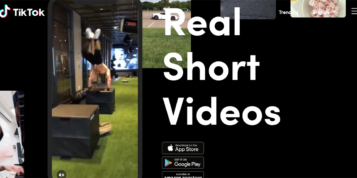The modern customer – who is your customer, what do they look like, what are they talking about, and why do you need to know?
In today’s technology driven world, consumers are always plugged in, whether they are shopping online, tweeting through the purchasing lifecycle, or writing reviews for their favourite or least favourite products. Digital advertising has sprung from this rapidly growing market, targeting online consumers with advertisements informed by their search habits.
As more people become engaged, more data has become available. While technological advances give advertisers access to a wealth of information, they need the proper tools to analyse it, because search habits only tell part of the story.
Comprehensive social media analysis helps brands and advertisers identify their customers and what they are looking for in products. For instance, advertisers are able to differentiate between the characteristics of potential customers and those of the curious window-shopper, understanding their customers within the larger conversation. Gaining specialised knowledge of customers and their interests allows advertisers to develop efficient advertising campaigns that target their intended audience.
The difference between customers and window-shoppers is evident when looking at pop culture references to luxury goods. A specific instance that has received recent media coverage is the increased online traffic searching for Maybach, a German luxury car manufacturer. Research suggests that this began when the singer Lorde released ‘Royals’, a song that references the famous car brand.
Crimson Hexagon’s ForSight™ technology offers marketers and advertisers the tools they need to separate potential customers from curious spectators. ForSight analysis not only uncovers volume and sentiment, but also offers technologies to understand topics of conversation and consumer interests and affinities.
Take Rolex for example. The famous Swiss watchmaker has been the subject of countless references from music lyrics to celebrity styling, attracting millions of curious fans to the brand. In fact, since January 1st, 2014 Rolex has received over 500,000 mentions on Twitter.
Crimson Hexagon’s Affinities™ exposes conversation about the different topics that are related to the Rolex brand and its position in popular media. For instance, people discussing Rolex are 14 times more likely to be interested in auto racing than authors in general on Twitter and are 16 times more likely to be interested in horses than the general Twitter audience. These statistics highlight the presence of conversation surrounding Rolex’s equestrian and auto racing events like the Rolex Kentucky 3 Day Event and the Rolex Sports Car Series.
There are also people talking about Rolex based on popular culture references. Affinities to sports and music highlight spheres where consumers might hear about the famous brand. For example, people talking about Rolex are 3 times more likely to have an identified interest in hip hop than Twitter authors in general, and a significant amount of this conversation references Rolex as an item worn and flaunted by celebrities.
How do advertisers locate people who are actually buying Rolex watches?
Crimson Hexagon has recently developed tools to analyse topics of conversation based on customisable characteristics like gender, location, interests, and keywords. These variables can help identify conversation of potential Rolex customers. For example, narrowing our search by adding keywords that relate to the finance and technology industries may align with the interests of people who have more disposable income.
Specifying consumer interests creates a clearer view of topics of conversation that relate directly to the Rolex brand. A variety of subjects are exposed including the Rolex GMT — Master II, which was featured in a recent Forbes article, and popular features of the watches, including Rolex oyster and stainless steel. Interestingly, evidence of a secondary market for vintage and used Rolex watches also appears, suggesting that greater knowledge of the brand will offer interesting findings.
Studying affinities gives advertisers a look into consumer interests and helps to separate potential buyers from online window-shoppers. Comprehensive social media analysis can include a wide variety of variables to make sure that the firm is catering to potential buyers in order to maximise impact on the right audience while minimising advertising costs.






